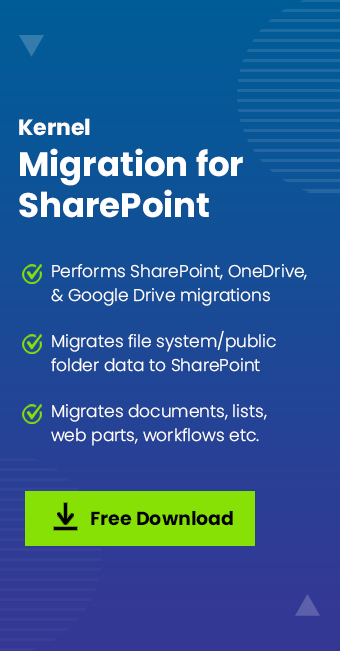Read time 4 minutes
Every day businesses create storable data in various formats. This data is essential to engage clients and gain visibility in the online marketplace. The files we store in our systems are documents, emails, spreadsheets, worksheets, presentations, photos, diagrams, videos, webpages, etc.
A content management system facilitates a business to have a central place to conduct all the necessary action on a file or a collection of files. Authorized users can create, publish, manage, verify, store, share, and process content on the selected platform. If these files are not stored correctly, it will be tough to process them further and keep track of information.
SharePoint from Microsoft has all the features to contain sizable business data and develop them into enterprise-level business-friendly information. It is available on both on-premises and online versions, and you can purchase it as a stand-alone application or with Office 365 Business subscription plans.
MS SharePoint as enterprise content management system
MS SharePoint is an easy collaborative platform that helps you manage content without external assistance or unnecessary time. Even a non-technical user with no technical expertise can create interactive enterprise content that a business can share internally or externally.
Let’s check some powerful features that make SharePoint a unique product for content management for the collaborative needs of a business.
- Asset Library
It is a pre-configured app that enables you to manage images, audio, video files, and all other documents. It has more metadata facilities that make searching and quick browsing for various files easier. - Content Organizer
In the Content organizer, the document’s author can use the content organizer to create rules that will decide how the documents will become accessible to the authorized user. The rules are made based on metadata and the type of content. It can target libraries and their folders, site pages, document lists, etc. - Records Management
The Record Center lets you create new rules, build libraries, and lists to manage information, and create information management policies. The records management plans implement the desired behavior on saved records. Furthermore, SharePoint in Office 365 considers contents are records, and the plans can ensure that a record will remain in its place in a specific archive folder. - Shared Content Types
Content Types are the collection of metadata that is recyclable, like data behavior, workflows, and settings. It can belong to a category of items or documents in the SharePoint site or library. The content types can be reused across site collections, and it can specify a variety of attributes – document templates, information management policies, workflows started from items for their types, metadata of items, and properties of files. - Managed Metadata Services
The managed metadata is an important SharePoint service that helps the admin to specify metadata. It will make the task of searching for an item easier with an extensive set of data that can be indexed better. The admin can apply new and informal metadata to any item, list, or folder.
Apart from all these content managing features, SharePoint also allows collaboration with other apps like OneDrive and Microsoft Teams. There can be real-time synchronization between the shared data instantly, and the data will be available in such applications.
Benefits of Microsoft SharePoint content management system
There are other benefits related to SharePoint that make it an impeccable candidate as the content manager for a business-
- It is highly cost-efficient, and its price is competitive compared to other services.
- It can integrate with multiple third-party apps easily.
- There is a centralized Admin Center for managing all the tasks.
- It is highly customizable, and the user interface is flexible.
- There are a great number of service apps and collaborative features to increase productivity.
Conclusion
SharePoint increases a business’s business productivity, communication, workflow, and collaboration facilities. It has suitable filters for managing documents, digital media, records, and web content. If you are looking to adopt SharePoint for your business, then Kernel Migration for SharePoint will help you move files from your local system to SharePoint directly. The SharePoint Migration software can migrate unlimited data and place them at the desired site, subsite, list, or library in SharePoint. A single account is called an SharePoint tenant and a tenant to tenant SharePoint migration moves all the selected information quickly. There are options to migrate contents with all their metadata, properties, and versioning. So, this is a complete tool for SharePoint migrations.








